Spotify vs Apple Music vs Amazon Music
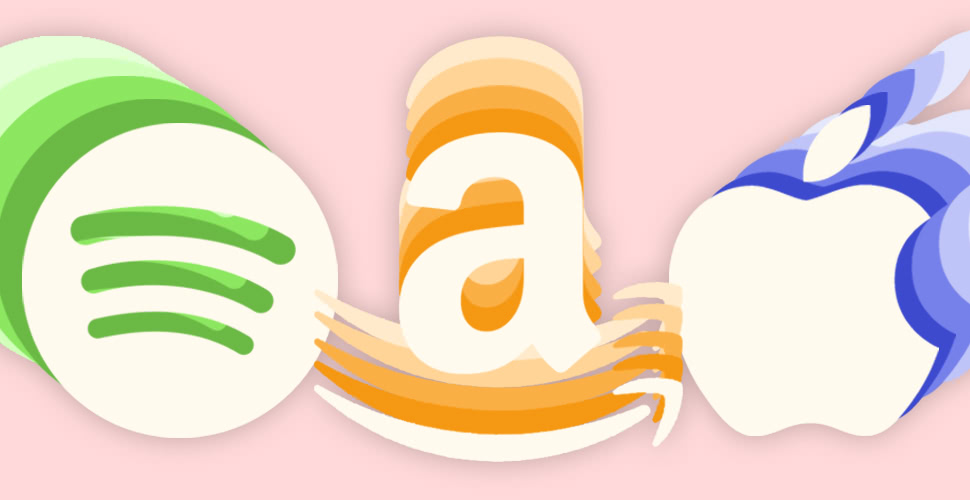
True story: streaming music saved the recording industry. There was a time, not so long ago, when the record business was dying uglier than nu-metal. iTunes provided hope, streaming platforms presented growth. And if the prognosticators are right, the rewards will be rich for years to come.
Australians have a lot of choice, and a ridiculous amount of music at their thumbs. Since Spotify opened for business here in 2012 (some months after the now-defunct JB Hi-Fi “Now” platform), Australia has stepped up as a “mature” streaming market, which is short-hand for a territory with cash to spend, smartphones galore and an appetite for listening to music, right away.
Chances are, you’re already among the five million or so Australians plugged in. Perhaps, you’re ready to unplug and get touchy with another brand. TIO takes a closer look at three of the leading players Down Under: Spotify vs Apple Music vs Amazon Music.
Origins
Spotify has been held up as the leader of the streaming brigade, the head of the recording industry’s White Knights. It’s the best known global brand, without doubt, though it’s not the first all-you-can-eat platform.
Swede Daniel Ek launched Spotify in October 2008, a full six months after Danish telecommunications company TDC pushed out its Play unlimited music service. Last month, Spotify announced it had 207 million monthly active users globally and 96 million subscribers, a ratio of roughly 2:1.
Spotify launched in Australia in May 2012, though the company doesn’t break out its local subscriber numbers. As the boss of streaming, Spotify routinely takes a hammering over the pittance it hands back to its music creators (though claims to having driven more than €10 billion to rights holders as at October 2018). The publicly-listed company isn’t alone by trickling down piddling sums to its content providers.
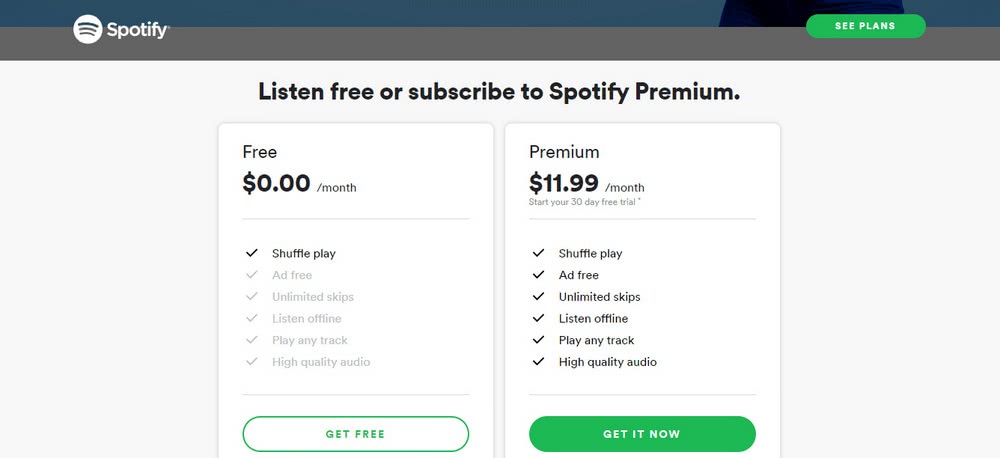
Spotify, welcomes you
You’ve got to hand it to Apple. The world’s first trillion-dollar company makes sexy gadgets which talk seamlessly with each other. And they know when to pull the plug.
Permanent digital downloads are about as cool as Fraser Anning. Apple saw what was coming for its iTunes Music Store and went about launching its own “Spotify killer.”
It came relatively late in the game, on June 30, 2015, with the on-point name Apple Music. It wasn’t a painless launch. Taylor Swift took the platform to task for its initial decision not to pay artists during the three-month “free” trial period, Apple changed its policy and shared the money.
We don’t know its subscriber numbers, though Apple Music is thought to be catching up, partly due to its deep integration in Apple’s iOS ecosystem. And partly because it’s Apple.
After months of stealth, behind-the-scenes prep work and licensing negotiations, Amazon Music Unlimited finally arrived Down Under in February 2018. It was late, yes, but the retail giant dangled a tidy saving to folks who’d already bought Echo smart speaker.
With its Amazon Music launch, Jeff Bezos’ company slammed its flag firmly into Aussie turf. Just weeks earlier, Amazon opened its Australian fulfilment centre, a 24,000-square-metre space in Melbourne’s Dandenong South.
The ABC recently had something to say about life in Amazon’s warehouse (it wasn’t all kind). Subscriber numbers for Amazon Music Unlimited aren’t available.
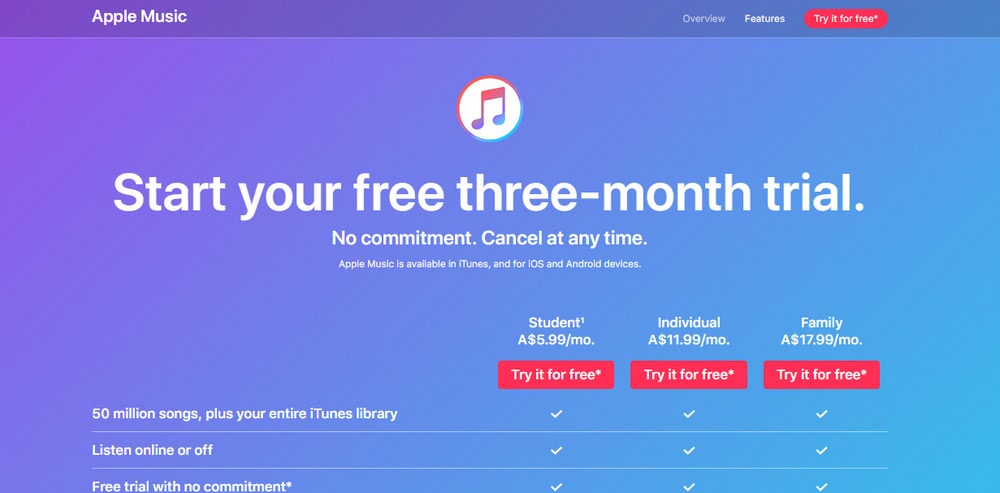
Apple Music dangles a longer trial period.
Subs, Plans
Australia’s streaming playing field doesn’t have any great bulges. All three app-based platforms boast licensed catalogues of around 50 million songs (plus your entire iTunes collection, for Apple Music customers) a figure that’s constantly on the rise, with offline playback for premium account owners.
All three offer premium access at $11.99 per month, while Spotify and Apple Music have options for students ($5.99) and family plans ($17.99).
Amazon rewards its users who forked out for its hardware. The music platform offers a cheap $4.99 monthly premium plan if you just want to listen via a single Amazon Echo, Echo Dot or Echo Plus smart speaker.
If you’ve already made your audio purchase, Spotify works with Amazon, Apple and Google speakers, while Apple’s streaming service works flawlessly on its own platforms. Amazon Music’s compatibility is comparatively limited.
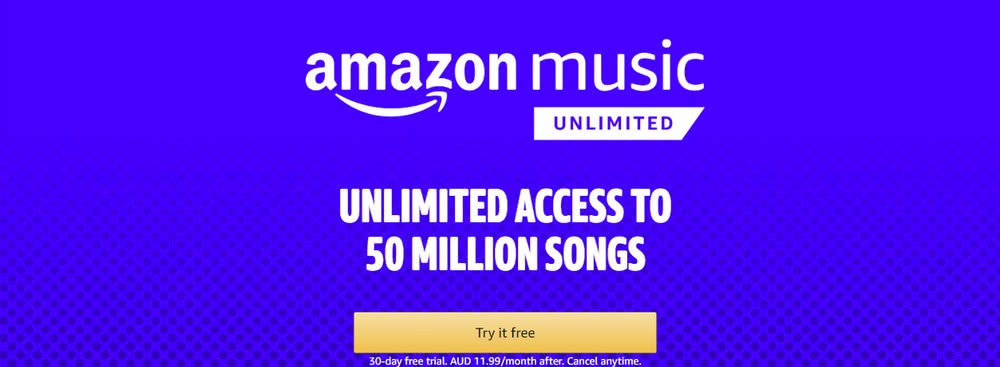
Amazon Music Unlimited has a lot of music, and a few limitations
Formats
Per Macrumours, Apple Music streams 256kbps AAC files, while Spotify uses the Ogg Vorbis format and lets you choose the bitrate depending on how you’re listening. On mobile you can elect to stream in Low (24 kbit/s), Normal (96 kbit/s), High (160 kbit/s) or Very High (320 kbit/s) quality.
Amazon is keeping mum on the streaming bitrate quality of its collection, though Pocket Lint took a punt and said it will be 320kbps, right up there with Spotify.
Freemium
Apple Music offers a three-month, sans-ads “free” trial of its fully-paid up offering, which switches to a monthly membership unless you diligently remember to cancel.
Spotify and Amazon Music Unlimited offer 30-day free trial period, after which time the big switch begins.
Back in the day, Spotify offered three-months (and McDonalds ads every 10 minutes). Those days are done. There is a 60-day free option which, of course, has conditions attached. Be warned: you can only use this free trial offer once, according to Spotify’s new terms.
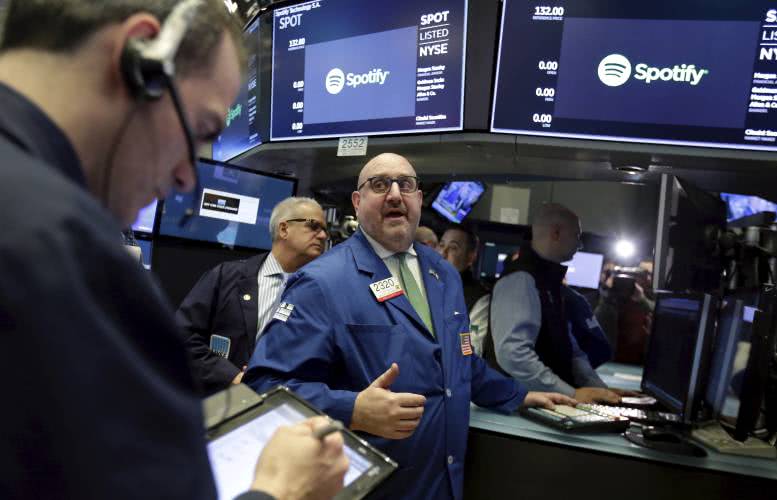
Spotify is worth a fortune on the New York Stock Exchange
Catalogues, Offline Listening
All three platforms offer a smorgasbord of licensed tunes when you hand over your details. Apple Music and Amazon Music Unlimited boast 50 million songs in its catalogue.
Spotify claims “over 35 million” songs. But, hey, who’s counting. It’s a ridiculous amount of music.
Consider how far we’ve come since iTunes launched in Australia in October 2005 with “over one million songs from major and independent record labels.”
Listening offline has its limits, but thanks to the competitive spirit between Spotify and Apple Music, those restrictions are working in music fans’ favour. Late last year, Spotify fixed its download limit at 10,000 tunes, up from 3,333 (at the same time, Spotify increased the number of devices you can download to from 3 to 5).
Apple takes a different stance, by allowing subscribers to bank as much music offline as there is storage on a device. Subs can be used across up to six different authorised devices.
Despite its name, Amazon Music Unlimited actually does have an offline limit: 100,000 songs and compatibility across 10 devices.
Hot tips
We’ve all hit peak stuff, we want the best experience and we want our music now. The teams behind Spotify, Apple Music and Amazon Music Unlimited aren’t dummies.
The bang-for-buck is roughly the same, the ease-of-use is nearly indiscernible though Spotify has greater compatibility with smart speakers and its tie-in with Genius gives you a behind-the-scenes look through the lyrics on its app.
Spotify and Amazon Music Unlimited apps have Chromecast compatibility, so you can at least cast and blast to a Google Home. Apple Music is not natively supported by Chromecast, yet.
Importantly, all three let you try before you buy, and leave when you want (which means something. Ever tried to cancel an NBA League Pass subscription?). So turn on, plug in and tap away.
This article originally appeared on The Industry Observer, which is now part of The Music Network.


































